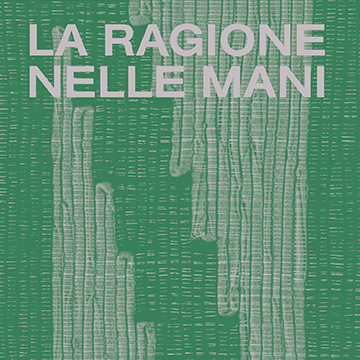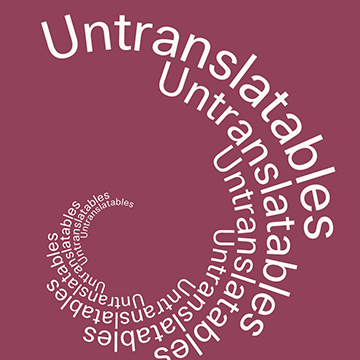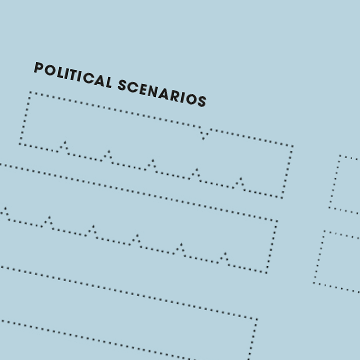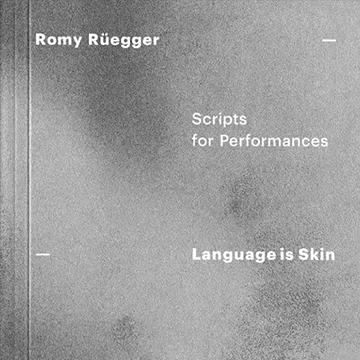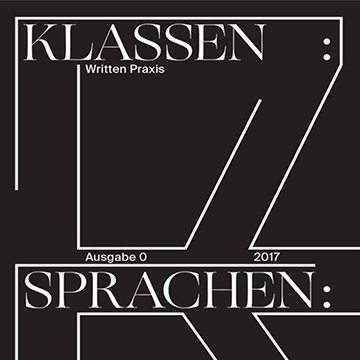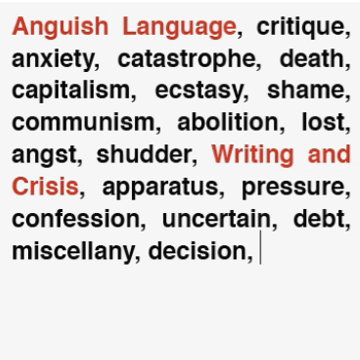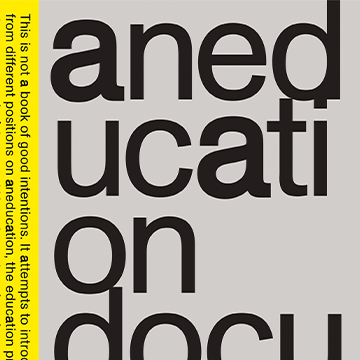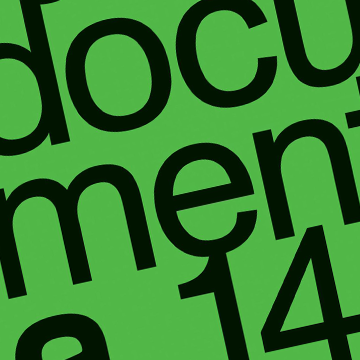Cecilia Vicuña’s liberatory text Language is Migrant interrogates the capacity of language within and through our wounded oral cultures and lexical histories. With her in mind, and emanating from the 2022 edition of Colomboscope festival, SCROLL also engages with the idea of language as a complex translator and migratory force, via the medium of print.
Tag: language
La ragione nelle mani
By drawing a connection between a local condition such as that of an alpine valley in Italy – the Valle Camonica – with its artisan knowledges and some untranslatable words belonging to languages from across the globe, artist Stefano Boccalini brings out territoriality and biodiversity as new-found precious awareness against loss and homologation.
Unübersetzbare Begriffe Kultureller Praktiken
Unübersetzbare Begriffe schlägt ein neues Vokabular von Begriffen vor, die in ihrer Sprache bestehen bleiben und nicht übersetzt werden. Es handelt sich um Wörter, die kulturelle Praktiken, Haltungen und Wertesysteme vermitteln und aus ihrem jeweiligen Sprach- und Wortkanon erklärt werden.
Untranslatable
Untranslatable proposes a new vocabulary of terms that remain untranslated in their original language. These are words that convey cultural practices, attitudes and value systems and are explained from their respective language and word canon. Terms are presented that broaden perspectives, facilitate new perspectives, and thus enrich collective thinking as a global community.
My Name is Language
The publication My Name Is Language (2020) explores the key tenets of artist Nicoline van Harskamp’s research and practice, such as the contemporary use and modification of languages, a treatment of names as spoken language rather than spelled identity markers, and the practice of self-naming. In the fictive worlds represented in this book, society is not centralized, not oversized, and self-naming is brought forward as a form of self-empowerment and resistance.
Language is Skin
Overlapping every day observations with archival material, confronting, jumping. Figures that intervene – interruptions into the reproduction and maintenance of colonial poison cabinets and patriarchal canons. Histories of involvement. The folding of histories. Entangling feminist fictions. Taking care of. Trouble, always trouble.
Klassensprachen
Instead of passing off art as a model for a better politics, we wish to test it for the signatures, the markers and forms of these deeply antagonistic relations of which art itself is a material part: we are concerned with art as a class language, as well as with class languages in art; with art’s room for maneuver as well as with its limits and restrictions, curatorially, in writing and debate.
Anguish Language: Writing and Crisis
Edited by John Cunningham, Anthony Iles, Mira Mattar and Marina Vishmidt.
Anguish Language approaches language as a core aspect of the present social crisis. The project engages in solidarity with forms of self-publishing, poetry, criticism, experimental writing and declamation that have arisen in the wake of the 2007-8 financial crisis, considering language among and through the social strugge responding to its consequences.
Aneducation • documenta 14
Forty-eight entries are organized alphabetically as a lexicon, each written by various members of the aneducation team and documenta 14 Chorus, as well as curators, artists, and educators who contributed to the program. The publication’s many points of departure present just as many desires for other sites of learning. Cross references among the entries show the deep relationships that existed—and continue to deepen—between the methods, programs, and locations of aneducation.
Eine Erfahrung • documenta 14
Forty-eight entries are organized alphabetically as a lexicon, each written by various members of the aneducation team and documenta 14 Chorus, as well as curators, artists, and educators who contributed to the program. The publication’s many points of departure present just as many desires for other sites of learning. Cross references among the entries show the deep relationships that existed—and continue to deepen—between the methods, programs, and locations of aneducation.

